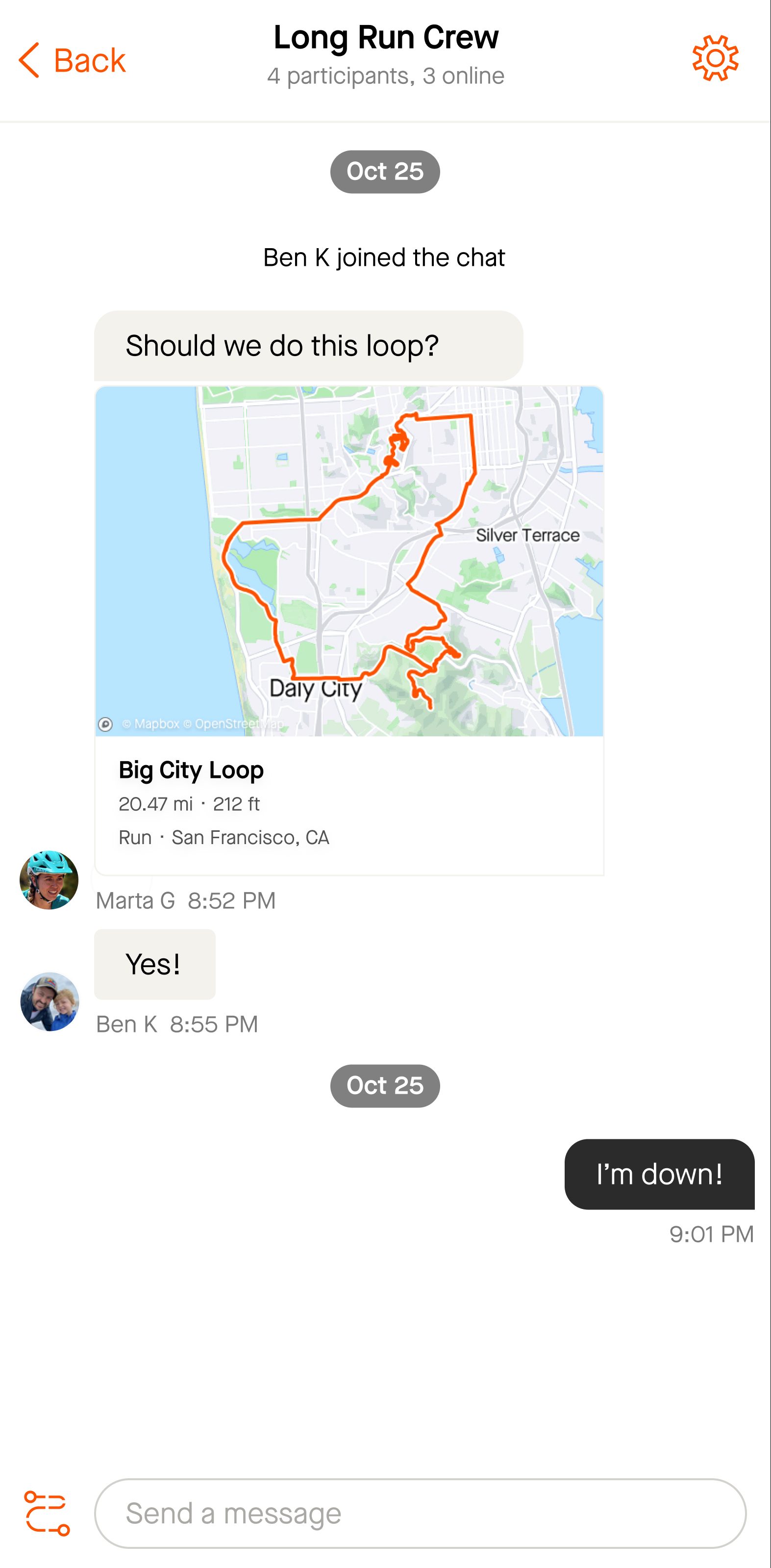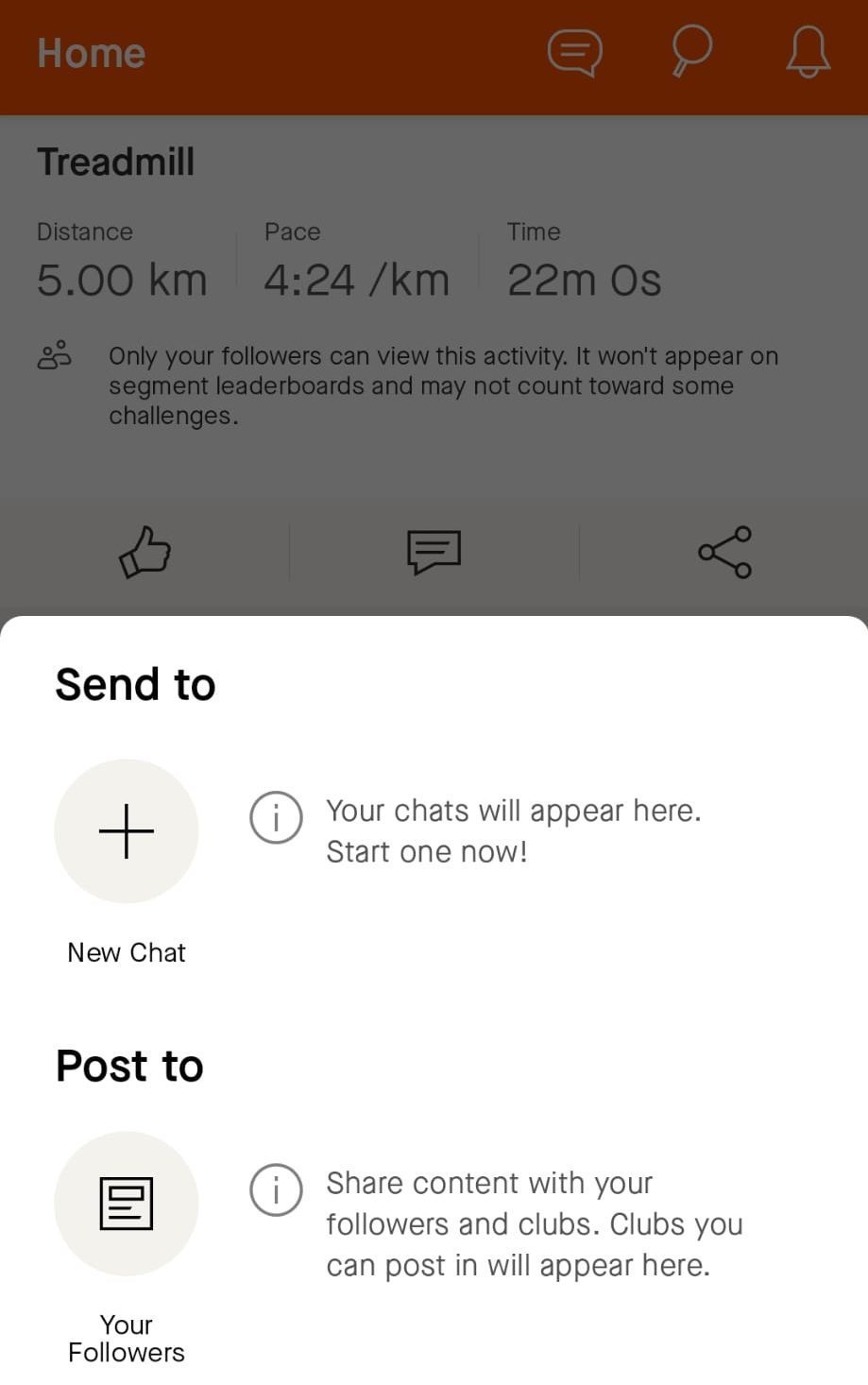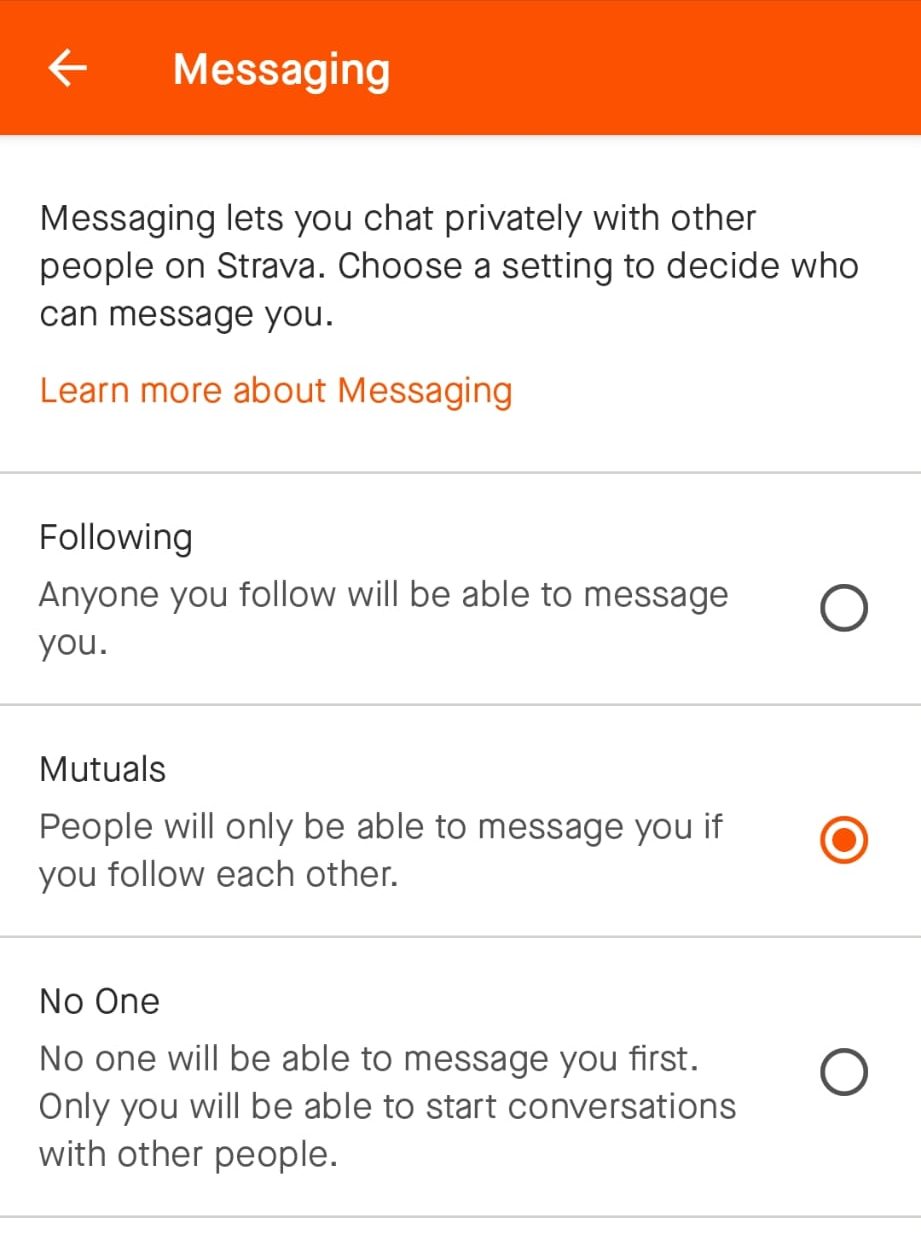Strava is taking one huge step nearer to turning into a true social community, because the fitness-tracking platform introduces in-app messaging to let customers ship personal one-to-one and group messages.
The brand new messaging characteristic, which is obtainable to each free and premium subscribers, goes a way towards unifying every part in a single app, so budding athletes can coordinate actions with out having to context-switch between Strava and third-party messaging apps like WhatsApp.
By way of the little speech bubble icon on the top-right of the app, customers can provoke a chat with anybody of their community, or begin a brand new group which may be custom-made with its personal title.

Strava: In-app messaging Picture Credit: Strava
Social membership
For tens of millions, Strava has turn into the de facto exercise monitoring platform for recording and analyzing rides, runs, rows, and dozens extra actions. However over its 14-year historical past, the platform has morphed into one thing extra akin to a social community, permitting customers to seek out and share routes; work together with teams; submit images; touch upon pals’ actions; and provides kudos.
In lots of respects, Strava may very well be described as a “Facebook for fitness.” However the precise “social” options have all the time been restricted — usually, the extent of a social interplay on Strava can be commenting on a good friend’s exercise, or giving them a “thumb’s up” (kudos). Issues get just a little extra purposeful in Strava occasions and golf equipment, that are principally personal teams with permitted members who can chat on dialogue boards and obtain notifications for brand new messages.
However prior to now, pals utilizing Strava would usually should take their discussions “off platform” to arrange logistics for a weekend bike journey, or to share data that they don’t wish to be within the public area. With messaging built-in, Strava hopes to alter that.
“Our community will now be able to coordinate adventures, connect for inspiration and tips and share their journey — all on one platform,” Strava’s chief enterprise officer Zipporah Allen informed TechCrunch.
When sharing a urged route for a run or a journey, Strava serves a content material preview of the route straight within the message, constructing on performance the corporate rolled out final month. And particular person actions will even now have a sharing choice, so customers can share that 5km run to a personal or group chat straight from the share button hooked up to that exercise.

Share an exercise Picture Credit: Paul Sawers / TechCrunch
Customers can set their very own preferences in phrases who can message them or invite them to a bunch chat — this defaults to no matter their profile visibility is. For instance, if their profile web page is restricted to “followers,” then Strava will restrict the messaging characteristic to “mutuals,” which implies solely customers who comply with one another can message one another.
Nevertheless, this may be adjusted within the settings, making it attainable for a person to maintain the profile visibility setting as it’s, however enable “following,” “mutuals,” or “no one” to message them.

Messaging: Settings Picture Credit: Paul Sawers / TechCrunch
Sticky
In-app messaging was one in every of Strava’s most requested options and has been marked as “under consideration” for a while — some have even taken to beginning a petition to get Strava to construct the characteristic.
It’s maybe stunning that Strava has taken this lengthy to convey messaging to the fray, however its resolution to take action now’s indicative of the place it’s at as a enterprise. Strava has raised north of $150 million in enterprise capital funding since its inception 14 years in the past, and people backers might want to see some return on their funding sooner or later — so the clock is ticking for Strava to establish some kind of exit route, be that an IPO or an acquisition.
Put merely, Strava must get its ship so as and make itself as interesting as attainable, whether or not that’s for the general public markets or a company suitor. And that may contain making itself as “sticky” as attainable for customers.
“When developing features, the guiding principle is how it connects back to our mission — to motivate people to live their best active life,” Allen mentioned. “On Strava, it’s really important to get the authenticity in the connection right so we took our time with beta testing of this feature to get it right for this first iteration.”
Strava launched a complicated and convoluted pricing improve earlier this 12 months, one which didn’t appear to stick to any kind of uniform technique — it trusted issues like if you joined; which area you reside in; and whether or not you pay month-to-month or yearly. However by the use of instance, a typical U.S. buyer noticed their annual subscription bounce from $60 to $80 a month, with the month-to-month price rising from $8 to $12 — a reasonably chunky 50% hike.
That type of enhance, with out gaining any significant new options, will probably be robust for a lot of customers to swallow, customers who would possibly beforehand have ignored their $8/month sub to help a service that they like, even when they’re not actually getting a lot from the premium options. And so that’s what Strava has been attempting to handle — for instance, it acquired 3D mapping platform Fatmap in January, which powers a brand new characteristic that shows historic actions through 3D video flyovers.
The messaging characteristic suits that narrative, besides it’s not restricted to premium subscribers. It’s designed to make the platform stickier, encouraging networks and teams to kind inside Strava itself and negate the necessity to share telephone numbers and take their communications to WhatsApp. This “network effect,” which has benefited many different social networking platforms earlier than it, may assist Strava enhance time spent within the app and, finally, scale back churn.
It additionally suits a broader narrative we’ve seen elsewhere within the social realm, with Fb’s guardian Meta noting the pattern away from massive public platforms and information feeds towards smaller, personal areas — because of this Meta purchased WhatsApp all these years in the past, an funding that has but to actually pay-off, however which seems more and more prudent amidst Fb’s gradual decay.
Enhancements
It’s value noting that Strava messaging just isn’t as feature-rich because it may very well be although — whereas it helps GIFs and message “reactions,” it presently doesn’t allow photo-sharing. That is one thing the corporate says will probably be coming in early 2024, alongside different options corresponding to the flexibility to share golf equipment and occasions straight in messaging, replete with content material previews. The corporate additionally plans to convey messaging on to Strava Golf equipment sooner or later, permitting customers to provoke personal conversations round particular themes associated to that membership.
Different notable limitations embrace the variety of individuals permitted in a dialog — Strava’s group messaging characteristic has an higher restrict of 25 individuals which, whereas seemingly ample for many eventualities, will preclude bigger working and driving teams from networking. This compares to an higher restrict of greater than 1,000 group members in WhatsApp, which additionally began supporting theme-specific communities as of final 12 months.
Elsewhere, Strava messaging doesn’t embrace helpful options corresponding to learn receipts, so it’s unattainable to know who has and hasn’t learn a message in a bunch chat. And for many who care about end-to-end encryption (E2EE) as present in standalone messaging apps like WhatsApp, Strava if once more discovered wanting.
“As we expand the capabilities of Strava, our focus is on creating a seamless and engaging athlete experience,” Allen mentioned. “While our current messaging feature does not include end-to-end encryption, we have implemented robust security measures to protect user data.”
Strava’s new messaging characteristic will probably be rolling out through an replace beginning right now.

